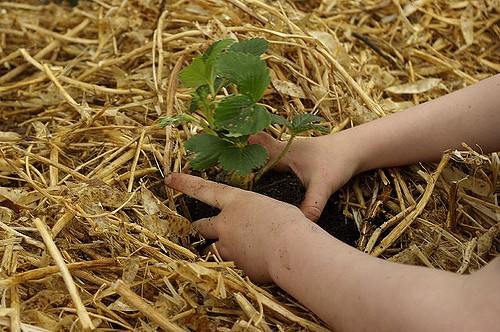|
Caring for the soil is one of the most important things in organic gardening. Without the complex web of life and nutrients below the surface of the ground in the topsoil, we would not be able to grow food. Understanding why the soil is so important, and taking measures to protect and enhance the topsoil is a crucial part of sustainable food production, whether we are talking about larger scale agriculture, or the home garden. So, how do organic gardeners go about caring for the soil in an organic garden? Let's take a look at some of the main organic gardening ideas surrounding this issue: What Happens in the Soil? In order to be able to protect the soil, we have to develop at least a basic understanding of what happens in the soil and how the natural systems allow plants to grow. The topsoil in a garden is a thriving ecosystem like any other. Like a forest or a meadow, all the elements in the ecosystem work together in a range of different ways. Like any other ecosystem, we as humans can aid or disrupt it through our interaction with it. In the topsoil, organic material is broken down and the nutrients are made available to plant roots through the agency of a range of bacteria, fungi and other creatures like earthworms that live in the soil. Nutrients and water pass through the complex web, allowing plants to grow. Plant matter then goes on to decay and feed the next generation, completing the natural cycles. As organic gardeners, it is important that we help to complete and even enhance these natural cycles rather than disrupting them. No-Dig Gardening
In an organic garden, what we don't do is often just as important as what we do. Many organic gardeners have discovered the benefits of 'no-dig' gardening. 'No-Dig' gardening is a collection of practices which basically boil down to disturbing the topsoil in growing areas as little as possible. Rather than digging in organic matter, and tilling the soil, no-dig gardeners will do whatever they can to minimise any disruption to the topsoil ecosystem. This allows the life of the soil web to do its job. Returning Surplus To The System One of the key practices in no-dig gardening is sheet mulching. Mulching involves laying a thick layer of organic matter on top of the soil between plants. This layer of organic material will be incorporated into the top soil by the agency of the creatures in a healthy soil web, which will also distribute water and nutrients to where they are needed. Mulching protects the soil so the complex web of organisms can do their job. Crop Rotation Another important part of caring for the soil in an organic garden is what you plant where, and when throughout each growing year. Certain plants will add nitrogen to the soil, while others will heavily deplete that, or other nutrients. Taking care of the soil involves rotating annual crops between different areas each year, as well as returning surplus/ nutrients to the growing areas to replace what the plants you grow have taken. If you care for the soil in your garden, it will continue to take care of you and your plants.
0 Comments
Leave a Reply. |
GROW ORGANIC!
|
|



 RSS Feed
RSS Feed




